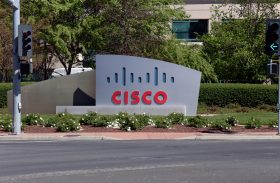Cumulus' CTO: TAI Will Lower Optical Costs

Cumulus Networks last week at the Telecom Infra Project (TIP) Summit unveiled a open source Transponder Abstraction Interface (TAI) that provides a consistent application programming interface (API) to optical transports.
The TAI will spur both innovation and competition across the optical network market, says Cumulus Networks CTO JR Rivers. The addition of an open API has the potential to drive down the cost of optical components, he says.
TAI was developed as part of the TIP project, which is based on an open source Voyager interoperability project for data centers that Facebook contributed. Voyager at its core is an Open Packet DWDM (dense wavelength division multiplexing) system that disaggregates hardware from software on metro and long-haul fiber optic transport networks. TAI, however, is designed to be applied to any open data center framework, says Rivers.
“We want to open the market,” says Rivers.
Cumulus Networks last week also announced that the Cumulus Linux network operating system is now available on Voyager. In addition, Cumulus Networks also expects to make Cumulus Networks available on Cassini, a more modular implementation of the specification defined by Facebook. Cumulus Networks is participating in Voyager trails with Vodafone, NYSERNet,Internet2, GRnet and CESNET.
It’s unclear to what degree IT organizations will be adopting the Facebook Voyager framework. But it’s starting to become apparent that dividends in the form of API such as TAI have the potential to be more broadly applied. Optical networks today are based in proprietary architectures that lock service providers into specific vendor for many years. TAI would make it simpler for service providers to mix and max optical networks as they saw fit.
Optical networks, in fact, are one of the last bastions of proprietary architectures in all of IT. It may take a while for TAI or some equivalent to finally open the optical network market. But now that the proverbial abstraction layer genie is out of the bottle chance are good that competition across the optical networking space will soon be a lot fiercer than it’s ever been.











